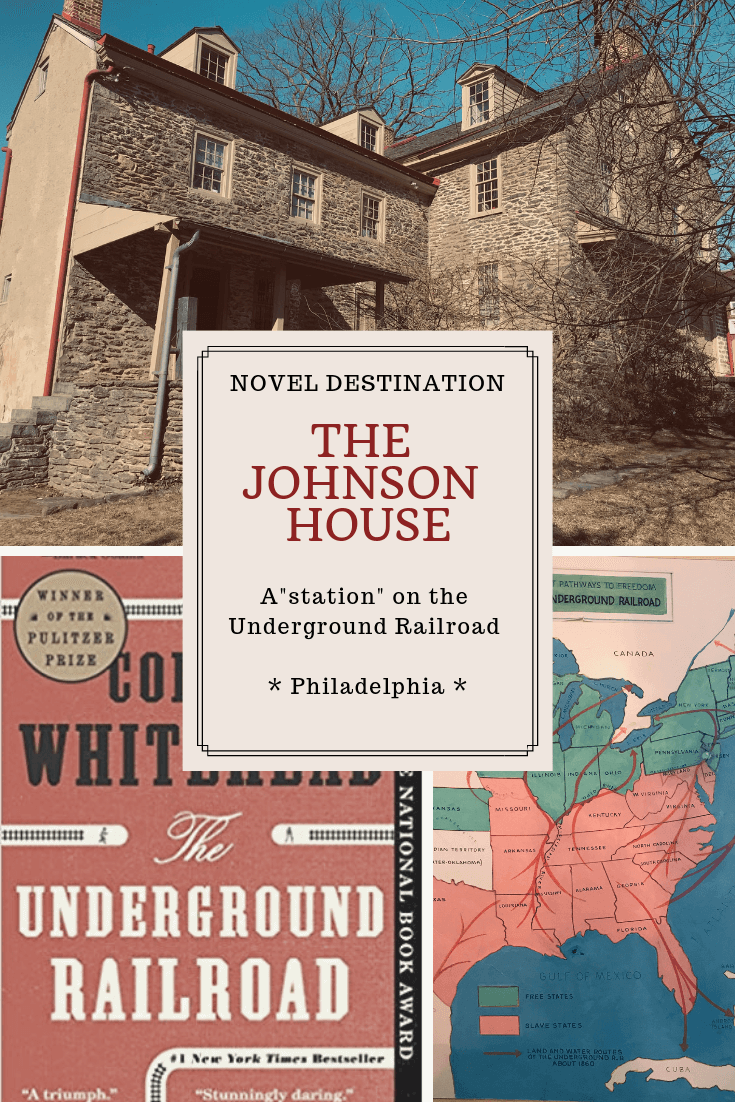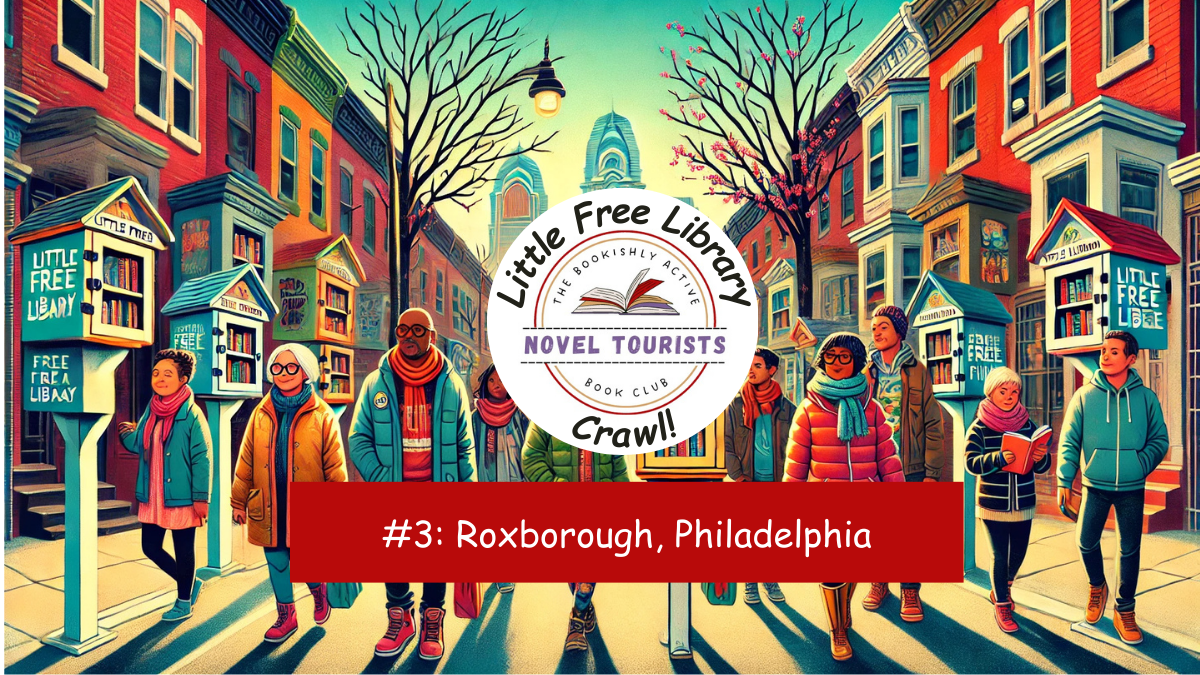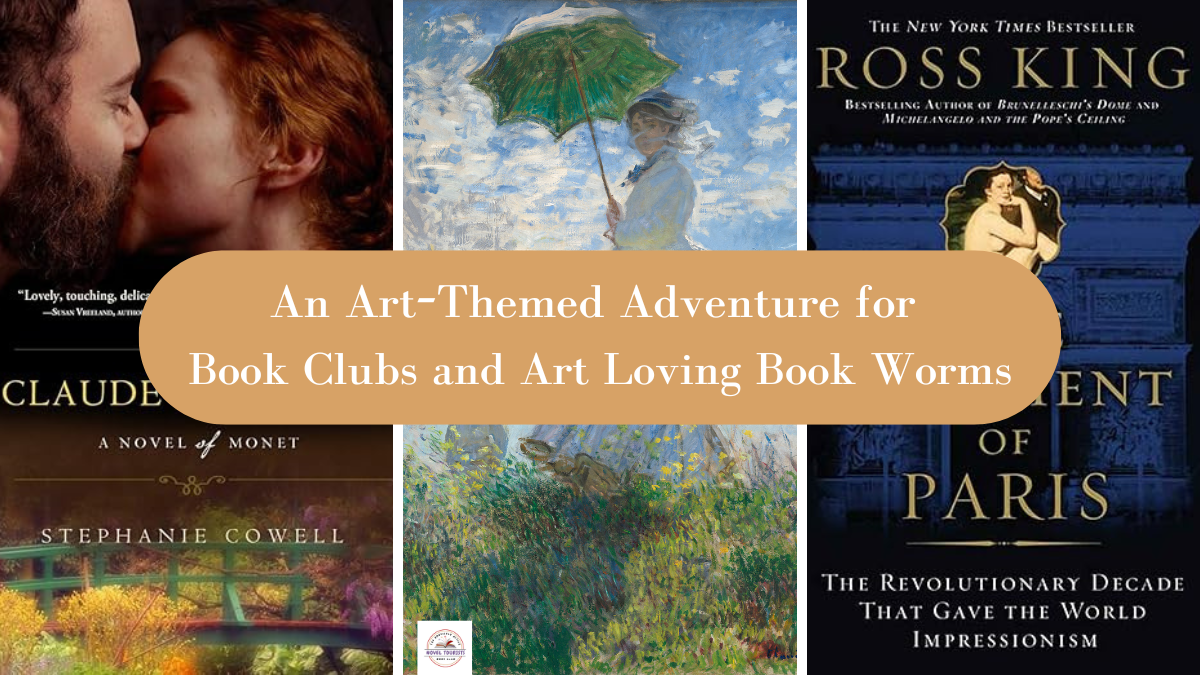In the United States, February is Black History Month, also known as African American History Month. I decided to read a novel that would give me more insight into this history and provide inspiration to visit somewhere that would help me further expand my understanding. I chose to pair a novel by Colson Whitehead, titled The Underground Railroad, with a visit to The Johnson House, a “station” on the Underground Railroad. The Johnson House is a National Historic Landmark in Philadelphia, Pennsylvania.
I do not recall when I first learned the term, “Underground Railroad.” But, it wasn’t until I read Colson Whitehead’s book and visited the Johnson House, that I felt like I was exposed to this aspect of African American history in a meaningful way. Through this pairing I truly realized the perils, fears, and risks undertaken by humans attempting to escape slavery’s chains. Although Whitehead’s novel depicts the Underground Railroad as a literal underground transportation system, I knew that in reality it was a network of individuals, including Quakers, free black persons, abolitionists and sympathizers. This network operated safe-houses and communicated with each other in secret to navigate runaway slaves on the path to freedom. On my visit to the Johnson House, I was surprised to learn that the Underground Railroad included travel by boat.

The Underground Railroad is an alternate history novel that tells the story of Cora and Samuel, two slaves escaping from a plantation in Georgia via the Underground Railroad. With Whitehead’s book fresh in my mind, I booked a tour of the Johnson House, a home significant for its role in the antislavery movement and the Underground Railroad in Philadelphia. The tour was led by a volunteer with an incredible wealth of knowledge about the Johnsons, the neighborhood, and the history of the Underground Railroad, generally, and specifically, in Philadelphia. I could have plopped down on the original wood flooring, over which many freedom seekers had walked, and listened to her for hours. Unfortunately, the tour lasted only a little over an hour. But, we learned so much.

The Johnson House is located in one of Philadelphia’s northwest neighborhoods known as Germantown. It faces Germantown Avenue, which was once an Indian path and is today one of the oldest continually used passageways for human movement in the United States. This historic area of Philadelphia is known as Freedom’s Backyard. The first written protest against slavery was penned nearby in 1688 by Francis Daniel Pastorius. Today, Germantown is the home to numerous anti-slavery landmarks; the Lest We Forget, Museum of Slavery; the Black Writer’s Museum; and a very popular black-owned bookstore and coffee shop, Uncle Bobbie’s Coffee & Books.
If you visit the Johnson House, you might also be interested in this self-guided mural walking tour of Germantown or strolling through Hood Cemetery, one of the oldest burial grounds in the United States.
Johnson House and the Underground Railroad
John Johnson, son of Dutch immigrants, built the house in 1768 for his son John, Jr. Like many in the area, the Johnsons were Quakers and did not believe in violence or slavery. However, it was Jeannette Rowland Johnson, the wife of John Johnson’s grandson, Samuel, who deserves the credit for turning the house into a station on the Underground Railroad. According to our tour guide, Samuel did not agree with slavery; however, he was unwilling to risk the $1,000 fine for helping a runaway. Therefore, it was not until Samuel’s death, under Jeannette’s direction, that the Johnson House was known to shield runaways.
Others in Germantown also actively opposed slavery. Directly across from the Johnson House sat the Kirk and Nice building. The proprietors were in the furniture and funeral business and reportedly had ties to the Underground Railroad. Some freedom seekers posed as dead bodies in coffins as they were transported north. Down the street sat The Washington Inn Hotel. Wagons delivering supplies to the hotel were frequently used to convey runaways to Plymouth Meeting or Abington to continue their quest for freedom in Canada.

During the tour you might hear about the Grimke sisters who were fierce abolitionists; Henry Box Brown, who spent 24 hours in a crate getting shipped to Philadelphia to escape slavery; Benjamin Lay, a radical abolitionist who would hide berries under his hat and then hit himself on the head to create the illusion of blood flowing from a beating; William Still, the Father of the Underground Railroad, who held meetings at the Johnson House and dedicated his life to trying to reunite families separated by slavery; Harriet Tubman, who visited the Johnson House, and more.

When you tour the Johnson House you’ll learn how runaways would rap softly on the side door of the house and in response to inquiry about their presence would communicate their need for shelter by simply stating, “A friend of a friend sent me.” You’ll see the escape hatch in the back room just before the kitchen. Freedom seekers would climb through the hatch to access the roof to hide when the slave catcher patrols or the sheriff came to search the house. We were told the sheriff did not make much of an effort to locate runaways, however. You see, the position of sheriff in Germantown was an elected position. The voters were primarily abolitionists. Being overly aggressive in exposing those harboring runaways would have ensured his swift replacement come election day.

Further, the people of Germantown were a stubborn lot who resisted control. It’s been told that Benjamin Franklin visited and discovered that the population of Germantown communicated (verbally and in writing) almost entirely in German. Franklin insisted that the community start printing and communicating in English. They refused. Franklin then attempted to strong-arm them into compliance by denying ink and paper supplies. The tough Dutch settlers figured out how to make their own ink and paper and continued to publish writings almost exclusively in German for over 100 years.
One of the most visceral parts of the tour of the Johnson House was when our guide described the whips used to beat slaves. They were not just whips of the sort that one might use to motivate a horse or other animal to movement. They often had pieces of metal weaved into the length of the whip that would lacerate the skin as though knifed. The guide also passed around an extremely heavy basket containing chains of a gauge equivalent to that which was used to ensnare slaves.

I left the Johnson house grateful that this home had been preserved for generations to know the effort against slavery that took place behind its walls.
Books to Read Before Your Visit to the Johnson House
Before your visit to the Johnson House, in addition to Whitehead’s, The Underground Railroad, click this link for several novels featuring the Underground Railroad that you may find interesting to read. Our tour guide also suggested the following nonfiction titles:
1. Underground Railroad by William Still

In the winter of 1852, a group of Philadelphia abolitionists dedicated to assisting runaway slaves in their flight to freedom formed a new assistance group to be part of the Underground Railroad—the General Vigilance Committee. William Still, himself a son of slaves, was named its secretary and executive director. Deeply moved by the stories of the fugitive slaves he helped conduct northward, Still took his committee record-keeping to a higher level. He wrote down, in eloquent narrative form, every detail of their stirring, often heartbreaking histories.
2. Never Caught by Erica Armstrong Dunbar and Kathleen Van Cleve

Adult and Young Readers Editions available: From her childhood, to her time with the Washingtons and living in the slave quarters, to her escape to New Hampshire, the authors share an intimate glimpse into the life of a little-known, but powerful figure in history, and her brave journey as she fled the most powerful couple in the country.
Born into a life of slavery, Ona Judge eventually grew up to be George and Martha Washington’s “favored” dower slave. When she was told that she was going to be given as a wedding gift to Martha Washington’s granddaughter, Ona made the bold and brave decision to flee to the north, where she would be a fugitive
3. Twelve Years a Slave by Solomon Northup

The son of a freed slave, Solomon Northup lived the first thirty years of his life as a free man in upstate New York. In the spring of 1841, he was offered a job: a short-term, lucrative engagement as a violinist in a traveling circus. It was a trap. In Washington, DC, Northup was drugged, kidnapped, and sold into slavery. He spent the next twelve years on plantations in Louisiana, enduring backbreaking labor, unimaginable violence, and inhumane treatment at the hands of cruel masters, until a kind stranger helped to win his release. His account of those years is a shocking, unforgettable portrait of America’s most insidious historical institution as told by a man who experienced it firsthand.
Disclaimer: If you decide you want to buy any of the books featured above, I appreciate you using the links in the post. Purchasing through the links costs no extra to you, but I receive a small commission that helps keep The Novel Tourist going. Thanks for your support!

If you love to read and also want to live a more active, engaged life this year, sign up for The Novel Tourist newsletter for more reading and exploring suggestions. Also, check out The Novel Tourist Facebook page. You’ll find a community of like-minded active readers!
Visit the Johnson House
6306 Germantown Ave.
Philadelphia, PA 19144
Phone: 215/438-1768
Website






